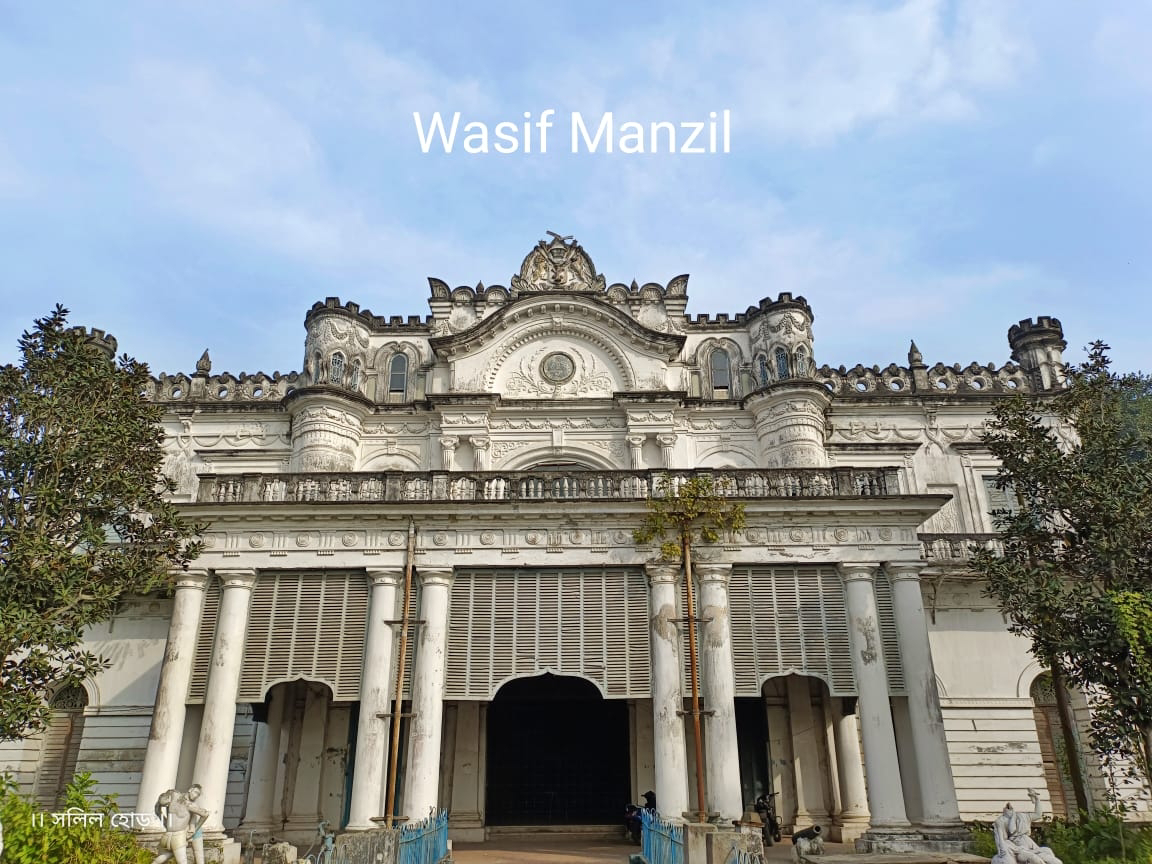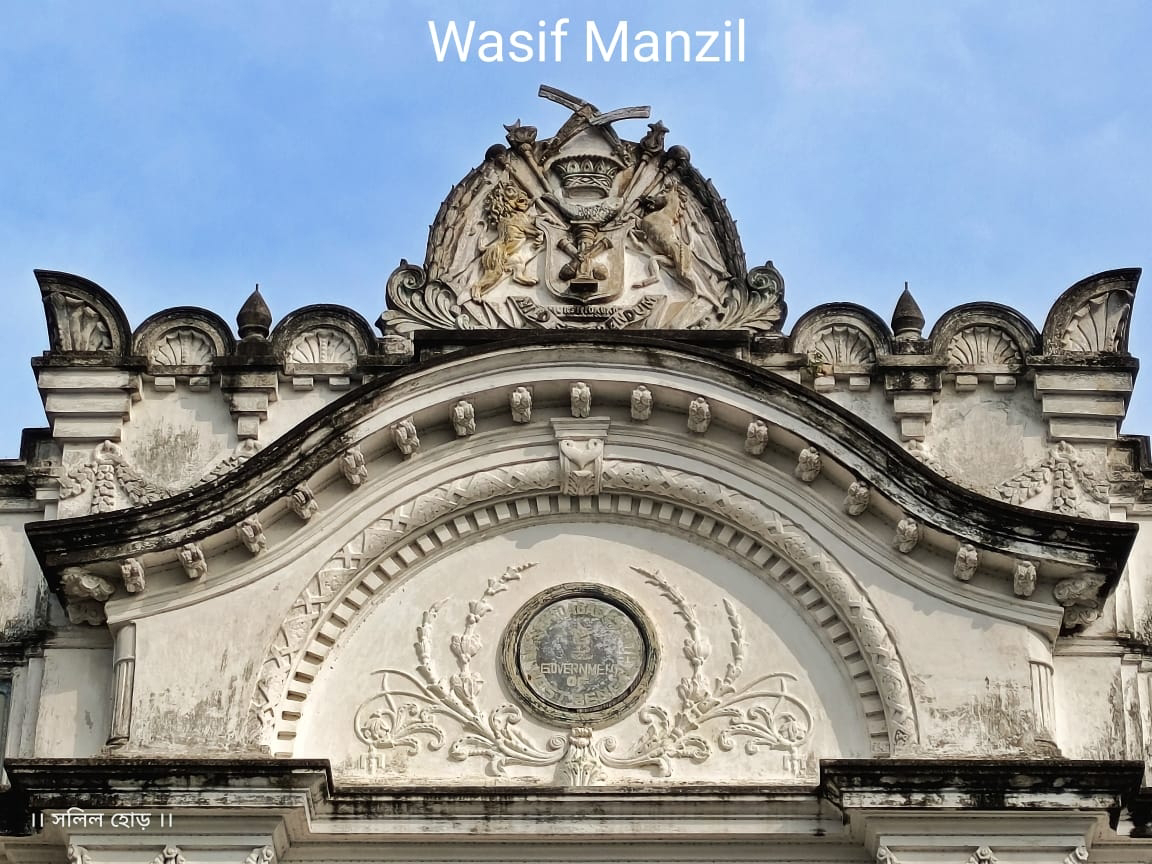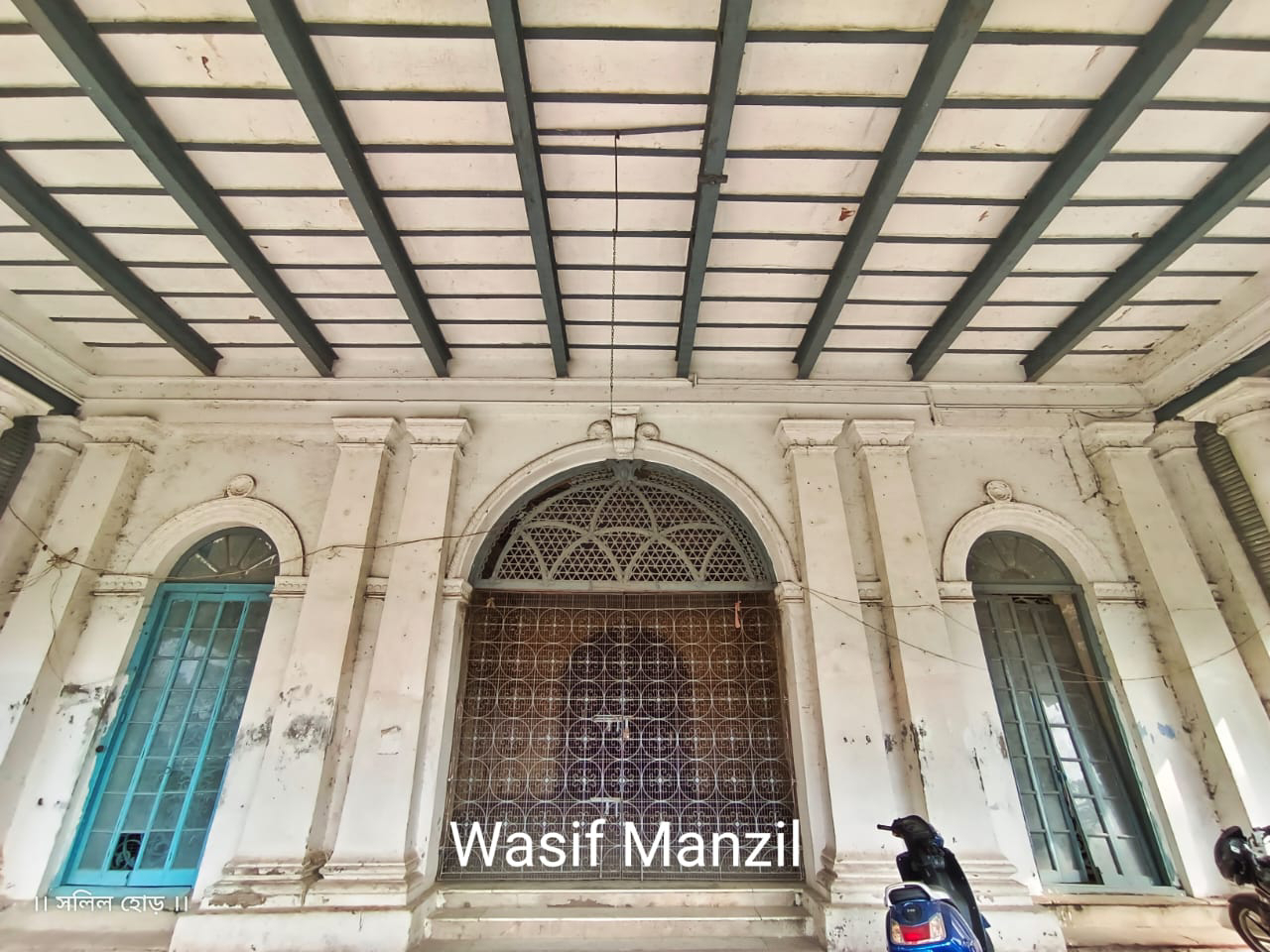মুর্শিদাবাদের ওয়াসিফ মঞ্জিল: এক বিস্মৃত ইতিহাসের জীবন্ত দলিল (Wasif Manzil in Murshidabad: A Living Document of a Forgotten History)
উনবিংশ শতাব্দীর শেষভাগে, যখন ভারত ব্রিটিশ ঔপনিবেশিক শাসনের অধীনে একটি সন্ধিক্ষণে দাঁড়িয়ে, সেই সময়ে মুর্শিদাবাদের ইতিহাসে এক নতুন অধ্যায়ের সূচনা হয়। প্রিন্স ওয়াসিফ আলি মির্জা, ইউরোপের মাটিতে দীর্ঘ পড়াশোনা শেষে এক আধা-ইংরেজ রূপে স্বদেশে প্রত্যাবর্তন করেন। মুর্শিদাবাদের মসনদে তখন তাঁর পিতা, নবাব হাসান আলি মির্জা। বিলেতের জীবনযাপনের প্রভাবে ওয়াসিফ আলি মির্জার রুচি ও জীবনযাত্রায় আমূল পরিবর্তন এসেছিল। তিনি ঐতিহ্যবাহী প্রাসাদে বাস করতে চাইলেন না। কিন্তু নতুন প্রাসাদ নির্মাণের মতো আর্থিক সামর্থ্যও তাঁর ছিল না। ঠিক এই সময়ে ১৮৯৭ সালের ভয়াবহ ভূমিকম্পে পুরনো প্রাসাদের একটি অংশ ভেঙে পড়েছিল। সেই ভাঙা অংশটিকেই সংস্কার করে তিনি এক নতুন প্রাসাদ নির্মাণ করেন, যার নামকরণ করেন নিজের নামানুসারেই – ওয়াসিফ মঞ্জিল। তখনও তিনি নবাব হননি। ১৯০৬ সালে পিতা নবাব হাসান আলি মির্জার প্রয়াণের পর প্রিন্স ওয়াসিফ আলি মির্জা নবাব বাহাদুর উপাধি ধারণ করেন।
ওয়াসিফ আলি মির্জা এই প্রাসাদটি মূলত বসবাসের উদ্দেশ্যেই নির্মাণ করেছিলেন। তবে তাঁর ভাগ্যে এই প্রাসাদে দীর্ঘকাল বসবাস লেখা ছিল না। নবাব হওয়ার পর নানা আর্থিক সংকটে পড়ে তিনি বাধ্য হন এই প্রাসাদ ত্যাগ করে কলকাতার দিকে পাড়ি জমাতে। জীবনের বাকি দিনগুলো তাঁর সেখানেই কাটে।
বর্তমানে মুর্শিদাবাদের নিজামত কেল্লার অবশিষ্ট প্রাসাদগুলির মধ্যে নবাব ওয়াসিফ আলি মির্জার কারুকার্যখচিত সেই 'ওয়াসিফ মঞ্জিল' অন্যতম। নবাবের কলকাতা চলে যাওয়ার পর, এই প্রাসাদটি দীর্ঘকাল ধরে মুর্শিদাবাদ এস্টেটের কার্যালয় হিসেবে ব্যবহৃত হয়েছে। বর্তমানে এটি পশ্চিমবঙ্গ সরকারের পর্যটন দফতর-এর তত্ত্বাবধানে রয়েছে।
বছরে একবার, বেরা উৎসবের দিন এই ওয়াসিফ মঞ্জিল আলোয় ঝলমলে হয়ে ওঠে। সেদিন মুর্শিদাবাদের বর্তমান নবাব বাহাদুর, মন্ত্রী, জেলাশাসক, মহকুমাশাসক, জেলা পুলিশ আধিকারিক, বিচারক-সহ বহু গণ্যমান্য ব্যক্তি ও সাধারণ মানুষের আগমনে প্রাসাদটি প্রাণবন্ত হয়ে ওঠে। তবে বছরের বাকি দিনগুলোতে এটি যেন এক নিস্তব্ধ, নীরব সাক্ষী, যা তার সোনালী অতীতের স্মৃতির ভার বহন করে চলেছে। ২০২৩ সালে জনসাধারণের জন্য মাত্র দুই দিনের জন্য এই বাড়িটি উন্মুক্ত করা হয়েছিল, যা এর গুরুত্ব ও ঐতিহাসিক মূল্যের তুলনায় খুবই অপ্রতুল।
ওয়াসিফ মঞ্জিলের প্রধান লোহার গেট ঠেলে ভেতরে প্রবেশ করলেই এক অদ্ভুত ভালো লাগার অনুভূতি মনকে আচ্ছন্ন করে তোলে। পথের দুই প্রান্তে দৃষ্টিনন্দন ফুলের বাগান ছিল এক সময়, যা বেশ কয়েকটি সুন্দর মূর্তি দ্বারা সজ্জিত। কিছুটা এগিয়ে গেলেই চোখে পড়ে দু'টি সেলামি তোপ। এখন আর সেই তোপ দাগা হয় না। কিন্তু এমন একটা সময় ছিল, যখন নবাবের কোনো বন্ধু অথবা কোনো ইংরেজ অফিসার প্রাসাদে এলে তাঁদের সম্মানার্থে এই তোপ দাগা হতো। আজ সবই স্মৃতি, ইতিহাসের পাতায় বন্দি এক অসাধারণ অধ্যায়।
ওয়াসিফ মঞ্জিল কেবল একটি প্রাসাদ নয়, এটি মুর্শিদাবাদের এক হারিয়ে যাওয়া গৌরবময় অধ্যায়ের প্রতিচ্ছবি। এর প্রতিটি ইঁট, প্রতিটি কোণ যেন নবাব ওয়াসিফ আলি মির্জার স্বপ্ন, তাঁর অভিজাত রুচি এবং তাঁর জীবনের উত্থান-পতনের নীরব সাক্ষী। এই প্রাসাদটি যেন ইতিহাসের পাতায় মুর্শিদাবাদের গৌরবকে ধরে রেখেছে, আর অপেক্ষা করছে আরও আলোকিত ভবিষ্যতের।
(English Version)
Wasif Manzil in Murshidabad: A Living Document of a Forgotten History
In the late 19th century, as India stood at a crossroads under British colonial rule, a new chapter began in the history of Murshidabad. Prince Wasif Ali Mirza, having completed extensive studies in Europe, returned to his homeland as a semi-Englishman. His father, Nawab Hassan Ali Mirza, then occupied the throne of Murshidabad. Life in England profoundly changed Wasif Ali Mirza's tastes and lifestyle. He no longer wished to reside in the traditional palace, but he lacked the financial means to construct a new one. It was at this opportune moment, in 1897, that a devastating earthquake damaged a portion of the old palace. He renovated this damaged section and built a new palace, naming it Wasif Manzil after himself. He was not yet the Nawab at this time. It was only after the demise of his father, Nawab Hassan Ali Mirza, in 1906, that Prince Wasif Ali Mirza assumed the title of Nawab Bahadur.
Wasif Ali Mirza primarily built this palace for residential purposes. However, it was not his destiny to live there for long. After becoming Nawab, he faced various financial difficulties, forcing him to leave the palace and relocate to Kolkata, where he spent the remainder of his life.
Among the remaining palaces within Murshidabad's Nizamat Fort, Nawab Wasif Ali Mirza's intricately designed Wasif Manzil stands out. After the Nawab moved to Kolkata, the palace served for a long time as the office of the Murshidabad Estate. Currently, it is under the supervision of the West Bengal Government's Tourism Department.
Once a year, on the day of the Bora festival, Wasif Manzil comes alive with dazzling lights. On this day, the palace becomes vibrant with the arrival of numerous dignitaries, including the current Nawab Bahadur of Murshidabad, ministers, district magistrates, sub-divisional officers, district police officers, and judges, as well as general public. However, for the rest of the year, it remains a silent, quiet witness, bearing the weight of its golden past. In 2023, the house was opened to the public for only two days, which is quite insufficient given its importance and historical value.
Pushing open Wasif Manzil's main iron gate evokes a peculiar sense of pleasantness. Once, there were beautiful flower gardens on both sides of the path, adorned with several exquisite statues. A little further on, two salute cannons come into view. These cannons are no longer fired. But there was a time when they were fired to honor the Nawab's friends or any English officers who visited the palace. Today, all that remains are memories, an extraordinary chapter confined to the pages of history.
Wasif Manzil is not merely a palace; it is a reflection of a lost glorious chapter of Murshidabad. Every brick, every corner seems to be a silent witness to Nawab Wasif Ali Mirza's dreams, his aristocratic taste, and the ups and downs of his life. This palace seems to preserve the glory of Murshidabad within the pages of history, awaiting a more enlightened future.







Comments
Post a Comment